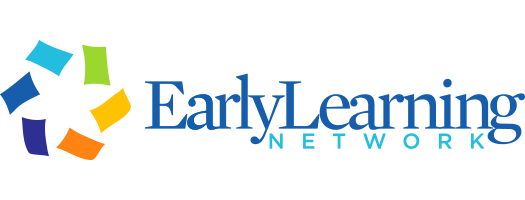
10 Mar Pre-K offers children a boost, but how do we make it last?
When children have access to high-quality prekindergarten (pre-K) programs, especially those from historically marginalized groups, the experiences and learning opportunities they are exposed to may “boost” their learning and development as they enter school — and have a lasting impact on their success.
However, the power of the pre-K boost varies widely among children, and unfortunately, sometimes fades in kindergarten and the early grades.
The Early Learning Network is working to understand the policies and practices that will help children sustain this boost over time as a way to help close achievement gaps in early learning.
“As a network, we’re looking at many factors that may help young children sustain the gains they make as a result of their pre-K experiences when they enter kindergarten and progress through the early grades,” said Susan Sheridan, principal investigator for the network lead, University of Nebraska-Lincoln.
There is strong evidence that high-quality pre-K programs help children gain critical cognitive, language, literacy and social-emotional skills. But learning opportunities and experiences offered to children in pre-K settings vary across the country. Some provide more of a boost than others.
“Those experiences help [children] enter kindergarten better ready to learn and better prepared to succeed — and continue on a positive trajectory throughout their schooling career,” said Kelly Purtell, co-principal investigator, Ohio State University.
Network research teams across the U.S. are currently taking a close look at two factors in particular that contribute to the pre-K boost: skill building and sustained environments.
Research and Policy Connections
There are many ways teachers, parents and policymakers can support and help children sustain and build on their learning gains as they transition from pre-K to kindergarten, both at home and at school.
Below are some of the key findings from across the network’s diverse research studies related to fostering skill growth and high-quality learning environments over time.
Key takeaway for skill building
Children who are exposed to both basic and complex skills in both pre-K programs and at home may be more likely to demonstrate long-term boosts as they progress through school. Both of those skill sets are essential for early learning success.
What does this mean for practice?
Teaching and supporting a range of skills in pre-K, including both basic skills (numbers, counting, letters, sounds) and more complex skills (oral language, vocabulary, comprehension, composition, critical thinking, problem solving), may help optimize children’s learning and prepare them to be successful in school.
What does this mean for policy?
Stronger alignment between pre-K and early elementary school curricula and instruction may help sustain children’s skills once they enter school.
Key takeaway for sustained environments
Learning environments include both classroom experiences and out of school settings, especially children’s homes. Strong and sustained parent-teacher partnerships can extend gains in learning and social skills across the pre-K to kindergarten transition and into the early grades.
What does this mean for practice?
Attention to children’s unique experiences in the classroom and between home and school are important to maintain the pre-K boost. The quality of their interactions and relationships with teachers and peers, and between parents and teachers, as well as the curricula used, and the types and amounts of instruction children receive in the classroom are important contributors to boost early learning.
What does this mean for policy?
Sustained relationships between parents and teachers forecast gains in learning and social skills through the transition into elementary school.
Assessment’s role in maintaining the boost
Leveraging assessment is another way to help maintain the pre-K boost.
The network’s assessment team at the University of California, Irvine has developed OLOS, a real-time, technology-based assessment tool, to help teachers understand whether individual children are receiving the kinds of math and literacy instruction they need to grow.
For example, if teachers know that a particular child is entering kindergarten with a solid understanding of letters and numbers, they can provide learning opportunities that will help take his/her skills to the next level.
“When children arrive at kindergarten, it’s really important to know what skills they’ve acquired in preschool,” said Ashley Adams, co-principal investigator, UC-Irvine. “Using assessment early on to find out at what point in the developmental trajectory children are, in terms of their literacy and math skills, and using that information to guide instruction throughout the kindergarten year can be an important way to maintain the pre-K boost.”
Quality and what happens over time matter
It’s important to understand children’s pre-K learning experiences, but we also need to know more about the learning experiences they have over time, throughout the kindergarten year and beyond.
“The kinds of experiences children have year after year matter,” said Robert Pianta, principal investigator, University of Virginia. “We should not think of attending pre-K as an inoculation — likening it to a vaccine that ensures children will be successful in school for the rest of their lives. Children need to have sustained exposure to effective educational environments for them to maintain gains in the way that we hope.”
How do we use this information to help close achievement gaps?
“We know that when children have access to a high-quality pre-K program it can have significant benefits, particularly for low-income students and other students who may be disadvantaged,” said Meghan McCormick, co-principal investigator, MDRC. “Learning what a high-quality program looks like can actually help reduce key disparities that we see in our educational system prior to the start of formal elementary school.”
What is “quality” in early learning?
Quality is complex and cannot be defined by any single factor.
The Early Learning Network is uncovering different facets of quality that promote children’s learning over time.
Learning environments and skill building are two factors in a constellation of many that impact children’s early learning success — they represent a good starting point for informing practices and policy that will help children maintain the pre-K boost.
Watch the network’s video on maintaining the pre-K boost.
The Early Learning Network is funded by the U.S. Department of Education’s Institute of Education Sciences.

